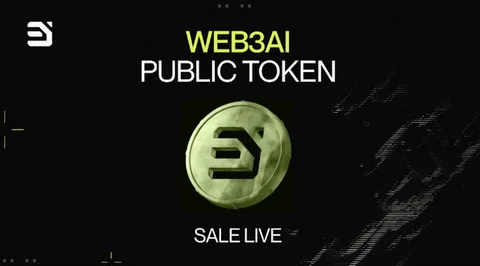Introduction
Bitcoin’s journey has been marked by extreme highs and lows, capturing the attention of individual and institutional investors alike. Recently, a notable trend has been developing in the cryptocurrency market: Bitcoin Exchange-Traded Funds (ETFs) have seen massive inflows, reportedly nearing the $1 billion mark this week.
This inflow surge reflects growing interest in it as a mainstream asset and signifies broader acceptance of cryptocurrency-based financial products.
In this post, we will explore what this remarkable inflow means for it, how ETFs operate within the crypto ecosystem, and what potential impacts we may see on the broader market. If you’re keen to understand why these inflows are significant, keep reading to learn how the ETFs might be shaping the future of digital asset investment.

1. Understanding Bitcoin ETFs: Bridging Traditional Finance and Cryptocurrency
Bitcoin ETFs offer a bridge between the high-volatility world of cryptocurrencies and the more regulated space of traditional financial markets. An ETF, or Exchange-Traded Fund, enables investors to gain exposure to it without directly holding or managing the cryptocurrency. it ETFs are traded on traditional stock exchanges, making it easier for investors unfamiliar with crypto exchanges to add it exposure to their portfolios.
The approval of ETFs in various regions, including Canada, Europe, and possibly the United States soon, has increased accessibility to this asset class. These ETFs are structured in two primary ways: spot-based and futures-based.
Spot-based ETFs hold it directly, whereas futures-based ETFs hold contracts speculating on it’s future price. Both options offer investors different levels of risk and potential reward, making it easier for individuals and institutions to diversify their assets through Bitcoin.
2. Recent Surge in Inflows: What’s Behind the Near $1 Billion Inflow This Week?
This week, the Bitcoin ETF market saw a surge in inflows, with nearly $1 billion invested in Bitcoin ETFs across global markets. This surge comes on the heels of heightened regulatory interest and advancements in ETF products, particularly in North America. But what’s driving this influx of investment?
There are several reasons. First, many institutional investors view ETFs as a relatively safe method of gaining exposure to it’s price movements, which often mirror the broader cryptocurrency market.
Another factor may be renewed optimism surrounding the U.S. Securities and Exchange Commission’s (SEC) potential approval of a spot Bitcoin ETF, which could drastically increase demand. Moreover, some investors see ETFs as a hedge against inflation or as an alternative store of value, spurred by ongoing concerns over economic uncertainty in traditional markets.
This inflow trend also coincides with broader market trends where assets are flowing out of cash and bonds into riskier investments like stocks and digital assets. For ETFs, the impact of institutional participation is substantial, as it reflects growing confidence in cryptocurrency’s long-term viability as a mainstream asset class.
3. Implications of High Bitcoin ETF Inflows for the Market
The approach of $1 billion in Bitcoin ETF inflows this week signals more than just an increase in capital; it suggests a shift in how investors view cryptocurrency within their portfolios. Here are a few potential implications:
- Increased Price Stability: As Bitcoin ETFs accumulate more assets, it may lend greater stability to it prices. Large, consistent inflows indicate demand and investor confidence, which can mitigate volatility.
- Boost to Institutional Interest: The success of ETFs demonstrates to institutions the possibility of managing crypto-related products within existing regulatory frameworks. This could encourage other types of Bitcoin-based financial products.
- Influence on Regulatory Approvals: The inflow volume may accelerate the push for ETF approvals in regions where they’re currently under review. For instance, the SEC’s hesitation to approve a spot-based ETF might shift in light of these increasing volumes, as it shows a mature investor interest in regulated Bitcoin products.
- Market Liquidity: ETFs also contribute to liquidity in the crypto market. As ETFs purchase it or futures contracts, it affects supply and demand on exchanges, potentially pushing prices upward or, at the least, maintaining a baseline of price support.
4. The Future of Bitcoin ETFs: Expanding Access and Increasing Adoption
Bitcoin ETFs have only begun to scratch the surface of their potential impact on the market. With regulatory clarity, more products will likely be introduced, including ETFs targeting specific types of Bitcoin assets, such as environmentally-conscious Bitcoin or it diversified with other digital assets. A rise in ETF products means more accessibility, allowing for fractionalized, diversified, and more customizable investment portfolios for retail and institutional investors.
Future advancements in the ETF space could see the creation of hybrid funds that blend Bitcoin with other commodities, stocks, or currencies. Additionally, ETFs may lead the charge toward decentralized finance (DeFi) solutions that blend regulatory adherence with innovative investment opportunities.
Conclusion
The massive inflows approaching $1 billion into ETFs this week underscore a new level of investor confidence and demand for Bitcoin-based financial products. These ETFs represent a broader acceptance of cryptocurrency in traditional finance and an acknowledgment of Bitcoin as a valuable asset class.
As the ETFs continue to grow in popularity, they are likely to play a vital role in the evolution of cryptocurrency markets and encourage more products that bridge the gap between crypto and mainstream finance.
We’d love to hear your thoughts on this development! Do you think Bitcoin ETFs will continue to grow in popularity, or are there better ways to invest in Bitcoin? Share your thoughts in the comments below.






